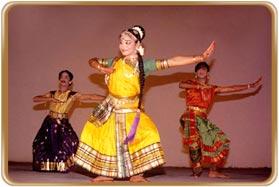

Therukoothu is akin to a dance drama and comes very much under the Mahabharatha.


Like Arjuna, he has to climb the Tapasu Maram for doing tapas - method acting, indeed! For example, the person donning the role of Arjuna has to live a very strict austere life for at least 15 days. The performer has to master dancing, singing and dialogue delivery before he can step on to the Therukoothu arena. The sub-stories and sub-plots of Mahabharatha are rich with potential for stage performances. There are some 50 stories like Arjuna’s penance, Duryodhana’s last battle, Kuravanchi, Karna motcham and so on. In all the temple festivals that have a detailed and elaborate programme schedule, Therukoothu finds a very prominent slot and has been a permanent feature. It forms a key event in the calendar of events and poojas at Draupadi Amman temples spread across Tamil Nadu. The Therukoothu in its present form has been in vogue for the past 300 years, according to research. This ancient folk art form of Tamil Nadu comes alive in the months of July and August. In the darkness of the village night, the Therukoothu performance is a sight to behold, a vision that stays in memory. Therukoothu is typically performed through the night during village festivals, especially in northern Tamil Nadu such as Kancheepuram, Chengelpet, Tiruvallur, Vellore, Ranipet, Tiruvannamalai and so on. Therukoothu themes are often the smaller stories of the Mahabharatha, the nuggets that are spicy and carry a message. Therukoothu is alive and kicking - at least in some places during the Tamil months of Aani and Aadi.


 0 kommentar(er)
0 kommentar(er)
